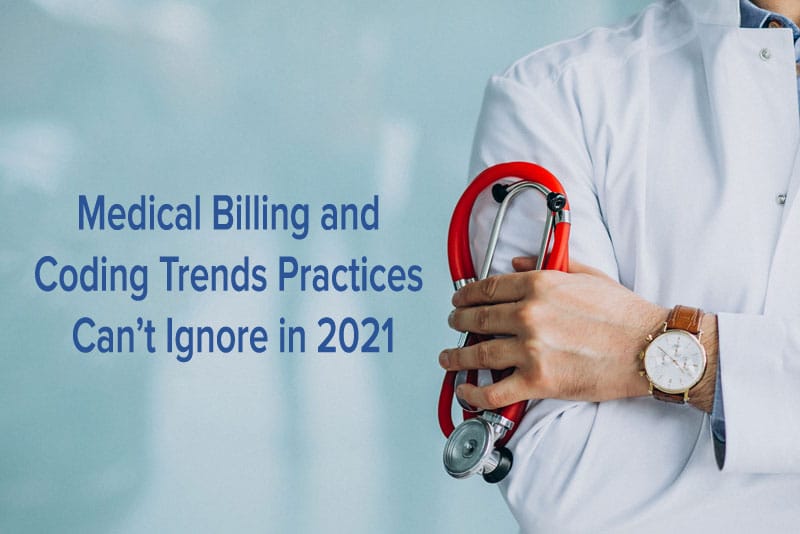The healthcare sector has been reluctant to embrace technology, one of the main concerns being patient safety. Medical billing and coding rules and the codes themselves are changed periodically, and new codes introduced from time to time. To improve any facility’s bottom-line, physicians as well as their billing staff or partnering medical coding companies must be up to date with the current trends. Adopting these changes can also benefit each practice – get reimbursement on time, avoid claim denials, and improve revenue.
Change in Medicare and Medicaid policies, complicated and rigid coding rules, changing technology options and such challenges make the billing process complicated for practices each year.
Here are the top four trends medical practices need to consider in 2021.
Medical Billing Outsourcing Market to Grow
The healthcare system is currently witnessing an increase in the use of outsourced medical billing services by hospitals and physicians mainly due to complex ICD-10 coding systems, increasing healthcare costs, and a federal mandate to implement electronic medical records (EMR) to maintain reimbursement levels. Diverse reports were published highlighting the future growth in this global market. According to a report from Grand View Research, Inc, the global medical billing outsourcing market size is projected to reach USD 23.1 billion by 2027, expanding at a CAGR of 12.3%. Consolidation of large healthcare practices is one of the major factors that drive this market growth. End users of medical billing outsourcing services are mainly hospitals and physician office.
Automation in Medical Billing
Automation in medical billing practice refers to tasks such as claims submission, and other important aspects of the process being handled by cloud-based software. Artificial intelligence (AI) reduces the risk of any errors in the medical claims and reduced payment delays and denials.
With properly implemented automation, your front office staff can find more time for patient engagement and patient responsibility, which improves patient satisfaction as well. Automated processes can emphasize patient interaction with healthcare professionals. However, practices need to be proficient in using AI technologies to implement this sort of billing system. Instead, they can outsource their billing and claim submission tasks to experienced medical billing and coding companies.
Awareness of Coding Updates
Agencies like CMS and AMA often announce important updates with in CPT or ICD codes. For instance, the American Medical Association (AMA) has recently announced new CPT codes for SARS-CoV-2 vaccine. Those six Category I codes for documenting the COVID-19 vaccine were – 0001A, 0002A, 0011A, 0012A, 91300 and 91301. AMA has also announced 4 new CPT codes to report COVID-19 laboratory testing, which are – 86408, 86409, 0225U and 0226U. Staying current on changing codes, documentation requirements and payment methods is crucial for success with any specialty billing.
Focus on Accounts Receivable Collection
Establishing an effective accounts receivable (AR) management strategy plays a key role in running a successful medical practice. AR refers to any amounts due from patients or insurers. Neglecting this section would lead to poor cash flow and lost revenue. To clear accounts receivable, it is important to check monthly A/R reports, review codes submitted to payers, perform internal auditing and appeal on-time for any denied claims. Reliable medical billing companies implement customized A/R strategies to improve the cash flow of any practice they work with.
To overcome the current healthcare billing complexities and to streamline the revenue cycle management of any practices in this New Year, it is important to be up-to-date with such trends.


